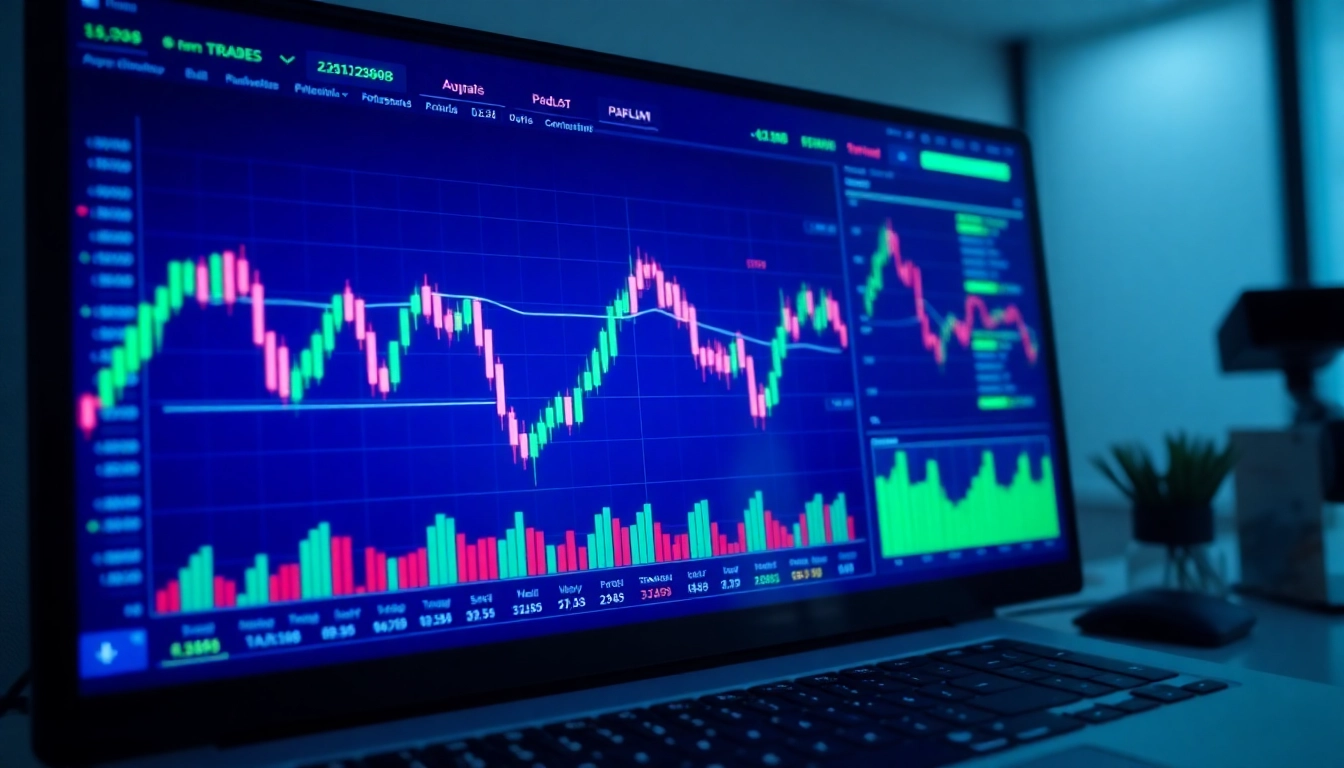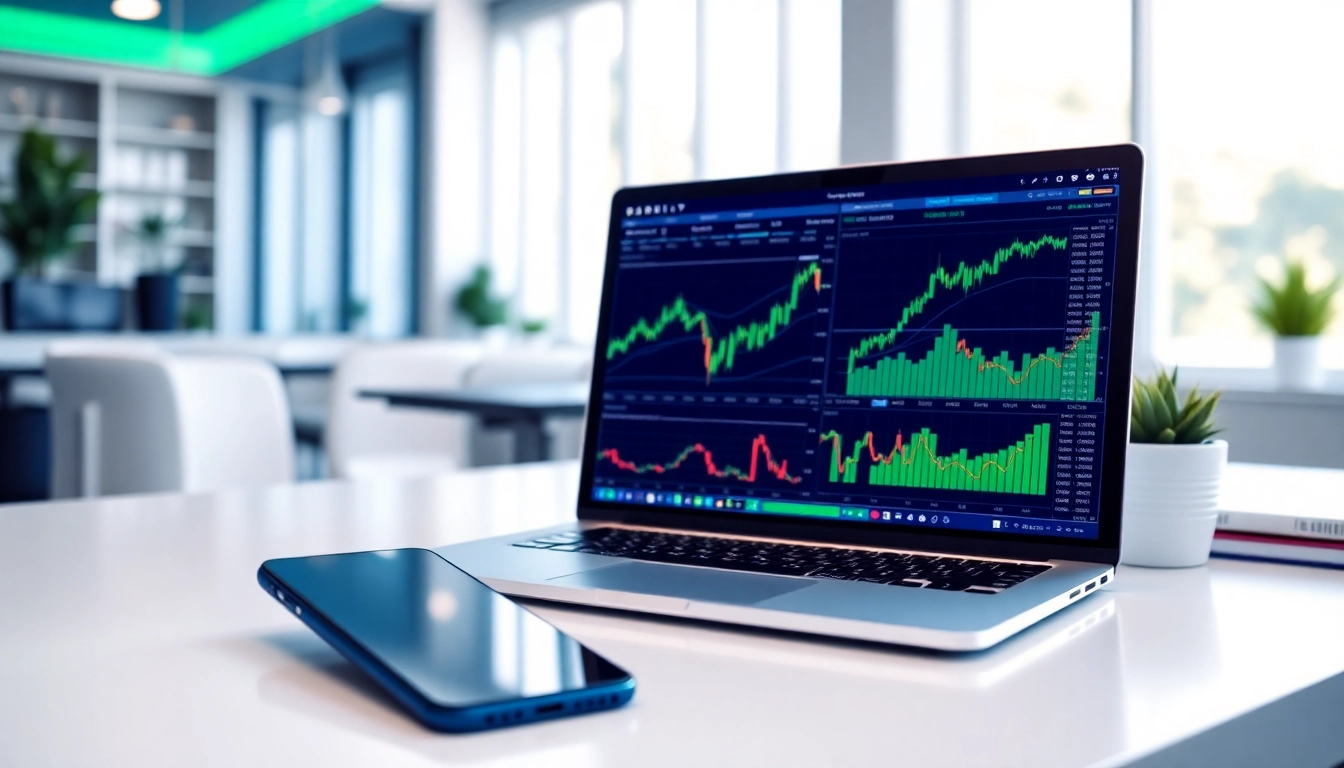Introduction to Trading View: Features and Benefits
In today’s fast-paced trading environment, having a robust and comprehensive charting platform is essential for both novice and experienced traders alike. trading view has emerged as a leading platform, revolutionizing how market analysis is conducted by integrating powerful charting tools, social features, and real-time data streams into a single, user-friendly interface. Its capability to unify multiple asset classes—stocks, cryptocurrencies, forex, commodities—makes it a versatile tool that can adapt to diverse trading styles and preferences.
Trading View’s inception was driven by the need for a comprehensive, accessible, and collaborative environment where traders could visualize markets, share insights, and execute strategies seamlessly. Its cloud-based architecture enables users anywhere, on any device, to access real-time charts and analysis, fostering a global community of traders who communicate, learn, and grow together. This platform’s innovative blend of charting, social networking, and automation features positions it as a game-changer in the financial analysis landscape.
Key features that differentiate Trading View from competitors
1. Advanced Charting Tools
Trading View offers an intuitive yet powerful charting interface loaded with technical analysis tools. Users can choose from various chart types, including candlestick, OHLC, line, and Renko, among others. The platform supports an extensive library of built-in indicators like Moving Averages, RSI, MACD, Bollinger Bands, and more, while also allowing the addition of custom indicators and scripts via Pine Script—a proprietary coding language designed for traders to develop personalized tools.
Furthermore, multi-timeframe analysis and the ability to overlay multiple assets enable traders to spot correlations and divergences effectively. The dynamic zoom, time axis customization, and data export options enhance the analytical depth available at a glance.
2. Real-Time Data and Alerts
Market timing is crucial, and Trading View excels by providing real-time streaming of prices across global exchanges. The platform’s alert system allows users to set customized notifications based on price levels, indicator thresholds, or specific chart patterns, ensuring traders never miss critical market movements. These alerts can be delivered via email, SMS, or push notifications, integrating seamlessly into daily routines.
This feature empowers traders to automate parts of their decision-making process and stay updated regardless of their location or device, significantly improving responsiveness and trading discipline.
3. Social Networking and Community Engagement
Trading View uniquely integrates a social component, where traders can publish ideas, comment, and discuss market expectations openly. Community-generated content offers diverse perspectives, from beginner insights to seasoned professional analyses. Such interaction fosters collective learning and validation of trading ideas, adding transparency and credibility to individual strategies.
Popular features include idea streams, following prominent traders, and participating in moderated discussion groups. This environment encourages transparency, mentorship, and rapid dissemination of trading signals that can be leveraged for better decision-making.
4. Multi-Platform Accessibility and Integration
Trading View operates seamlessly across multiple devices—web browsers, desktop applications, and smartphones—allowing traders to stay connected on the go. Furthermore, it integrates with numerous brokerage accounts, enabling direct trading execution from the platform itself, thus closing the gap between analysis and action.
Its API capabilities also support automation and custom integrations, making it suitable for algorithmic traders and institutional use.
Getting Started with Trading View: Setup and Customization
1. Creating Your Account and Navigating the Interface
Getting started is straightforward. Simply sign up using an email account or through social media credentials. Once logged in, the interface presents a main chart window, watchlists, and news feeds. The platform’s layout is customizable, letting users organize panels for quick access to markets, alerts, and community ideas.
Navigation is intuitive, with toolbar icons for drawing tools, indicators, timeframes, and other functionalities. The platform also offers guided tutorials and a comprehensive help center to assist new users in mastering its features.
2. Personalizing Charts and Watchlists for Optimal Workflows
Personalization enhances efficiency. Users can create multiple watchlists for various asset classes or trading strategies. Saving favorite indicators, color schemes, and chart layouts streamlines analysis, reducing setup time during trading sessions.
Furthermore, custom templates enable traders to switch between different scenarios or market conditions effortlessly, facilitating quick decision-making based on predefined technical setups.
3. Utilizing Alert Systems and Social Features Effectively
Set alerts strategically around key support and resistance levels, indicator crossovers, or specific pattern formations. Combining alerts with the community features—such as sharing outlooks or commenting on others’ ideas—amplifies market insights and collaborative learning.
Active engagement in the social community can also provide early signals from top traders, while personal idea publishing fosters feedback and strategic refinement.
Advanced Trading Strategies Using Trading View
1. Implementing Technical Analysis with Trading View Tools
The backbone of professional trading involves technical analysis, and Trading View’s tools simplify this process. Using multi-timeframe analysis allows traders to examine short-term momentum aligned with long-term trends. Combining multiple indicators—like Fibonacci retracements or volume profile—can improve entry and exit timing.
Backtesting strategies on historical data further helps validate assumptions before deploying real capital, minimizing risk.
2. Using Indicators and Drawing Tools for Market Predictions
Indicators such as Moving Averages, RSI, MACD, and custom scripts facilitate objective assessments of market conditions. Drawing tools, including trendlines, Fibonacci levels, and chart patterns, assist in visualizing complex setups like head-and-shoulders or Double Tops/Bottoms.
Automating pattern recognition with scripts can speed up analysis, while scenario simulations enable traders to test responses to various market moves.
3. Sharing Ideas and Collaborating within the Trading View Community
Consider publishing analyses regularly. Sharing ideas not only showcases expertise but also invites constructive feedback from seasoned traders, which can refine your strategies. Engaging with community discussions broadens perspectives and may reveal emerging market trends or hidden opportunities.
Collaborative analysis often leads to innovative trading techniques that can be integrated into personal routines for superior results.
Integrating Trading View into Your Trading Routine
1. Syncing with Brokers and Automated Trading Options
Integration with brokers enables real-time order execution, decreasing latency and eliminating manual entry errors. Trading View’s supported broker list includes major players, making it easier to automate trade execution based on pre-set conditions.
Advanced users can leverage Trading View’s API or scripting to develop algorithmic trading strategies, automating analysis, and order management for enhanced efficiency.
2. Managing Risk and Setting Realistic Goals with Trading View Analytics
Use the analytical tools to establish stop-loss, take-profit levels, and position sizing based on market volatility and risk appetite. Multiple indicator confirmations reduce false signals, strengthening trading confidence.
Regularly review past performance metrics—such as win/loss ratios, average gains, and drawdowns—to fine-tune your approach and set achievable performance goals.
3. Tracking Performance and Refining Strategies Over Time
Leverage Trading View’s performance tracking features to analyze trading results objectively. Identifying which setups or indicators yield consistent profits aids in strategy refinement.
Documenting and reviewing trade journals within the platform or via external tools ensures continuous learning and adaptive improvement, essential for long-term success.
Future Trends and Optimization Tips for Trading View Users
1. Emerging Features and Upcoming Updates in Trading View
The platform continually evolves, with upcoming features including enhanced AI-driven analysis, deeper integration with broker APIs, and more advanced automation capabilities. Staying updated through official release notes and community forums ensures users can leverage new tools promptly.
2. Best Practices for Maximizing Platform Efficiency
Invest time in customizing your workspace, utilizing keyboard shortcuts, and setting up automated alerts. Regularly exploring new scripts and indicators can uncover novel insights.
Participation in community forums and webinars further enhances your strategic arsenal, ensuring you maximize the platform’s full potential.
3. Getting Support and Continuous Learning Opportunities
Take advantage of Trading View’s extensive support options, including live chat, tutorials, and user guides. Additionally, many third-party educational platforms offer courses dedicated to mastering Trading View’s advanced features and trading strategies.
Joining trading groups, attending webinars, and subscribing to expert analysis channels keep your skills sharp and adaptable in a dynamic market landscape.



